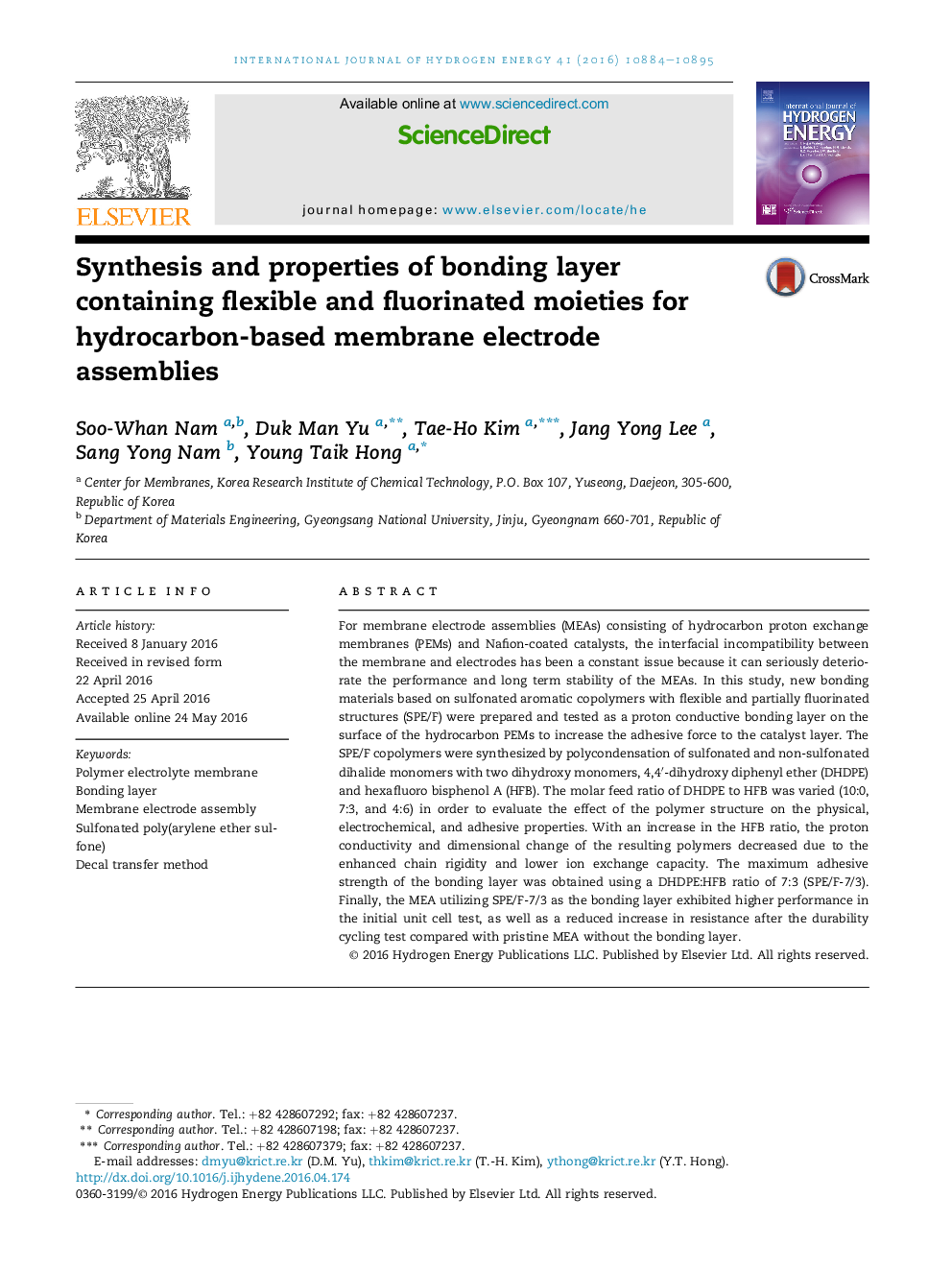| کد مقاله | کد نشریه | سال انتشار | مقاله انگلیسی | نسخه تمام متن |
|---|---|---|---|---|
| 1276813 | 1497400 | 2016 | 12 صفحه PDF | دانلود رایگان |
• The bonding layer was used to improve the interfacial adhesion of MEA.
• Flexible and partially fluorinated moiety was included in the bonding layer.
• The power density of MEA using the bonding layer increased to 702 mW/cm2.
• A lower MEA resistance was achieved after applying the accelerated protocol.
For membrane electrode assemblies (MEAs) consisting of hydrocarbon proton exchange membranes (PEMs) and Nafion-coated catalysts, the interfacial incompatibility between the membrane and electrodes has been a constant issue because it can seriously deteriorate the performance and long term stability of the MEAs. In this study, new bonding materials based on sulfonated aromatic copolymers with flexible and partially fluorinated structures (SPE/F) were prepared and tested as a proton conductive bonding layer on the surface of the hydrocarbon PEMs to increase the adhesive force to the catalyst layer. The SPE/F copolymers were synthesized by polycondensation of sulfonated and non-sulfonated dihalide monomers with two dihydroxy monomers, 4,4′-dihydroxy diphenyl ether (DHDPE) and hexafluoro bisphenol A (HFB). The molar feed ratio of DHDPE to HFB was varied (10:0, 7:3, and 4:6) in order to evaluate the effect of the polymer structure on the physical, electrochemical, and adhesive properties. With an increase in the HFB ratio, the proton conductivity and dimensional change of the resulting polymers decreased due to the enhanced chain rigidity and lower ion exchange capacity. The maximum adhesive strength of the bonding layer was obtained using a DHDPE:HFB ratio of 7:3 (SPE/F-7/3). Finally, the MEA utilizing SPE/F-7/3 as the bonding layer exhibited higher performance in the initial unit cell test, as well as a reduced increase in resistance after the durability cycling test compared with pristine MEA without the bonding layer.
Journal: International Journal of Hydrogen Energy - Volume 41, Issue 25, 6 July 2016, Pages 10884–10895
